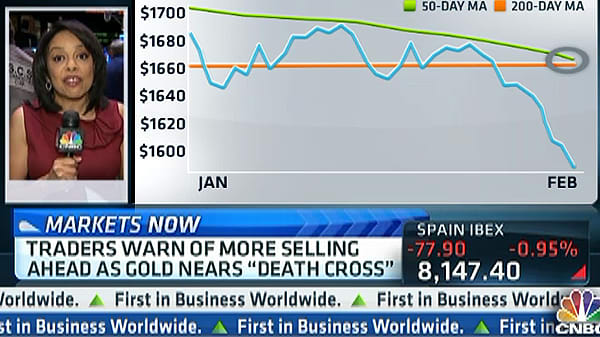Jim Wyckoff, market analyst with JimWyckoff.com, said the put position could be a factor. "The fact that we pushed prices below $1600 and they can exercise those puts, that's one more bearish clue," he said. He described the market as being short-term oversold.
"Gold prices are still in a 12-year old uptrend on the longer-term chart," Wyckoff said. "Right now this pullback is a downside technical correction in a longer-term uptrend. The key on a longer term basis is the $1500 level. If we push multiple closes below $1500, that is going to produce longer term technical damage."
(See More: A Bright Future for Precious Metals)
Selling in the big exchange traded funds has also been a factor, but Gero notes that open interest has actually been increasing in the past two weeks, to about 450,000, from 430,000.
"Companies afraid to miss selling opportunities have increased hedging and trade selling," Gero said. "There's been some selling against the ETF position. Some major managers like Louis Bacon and George Soros have gotten out." Soros Fund Management and Bacon's Moore Capital Management both reported they cut holdings of gold ETFs as of the end of the year. Investor John Paulson's Paulson and Co. reported it retained its 21.8 million shares in SPDR Gold Trust.
(See More: Are Hedge Funds Dumping Gold?)
The selling could be close to a bottom. Steel said emerging market buying is already coming in, and as the metal declines, scrap sales will decline, taking pressure off the gold price.
"The more it goes down, the more likely we are to see price sensitive buyers, particularly in the Far East, coming in," he said.






